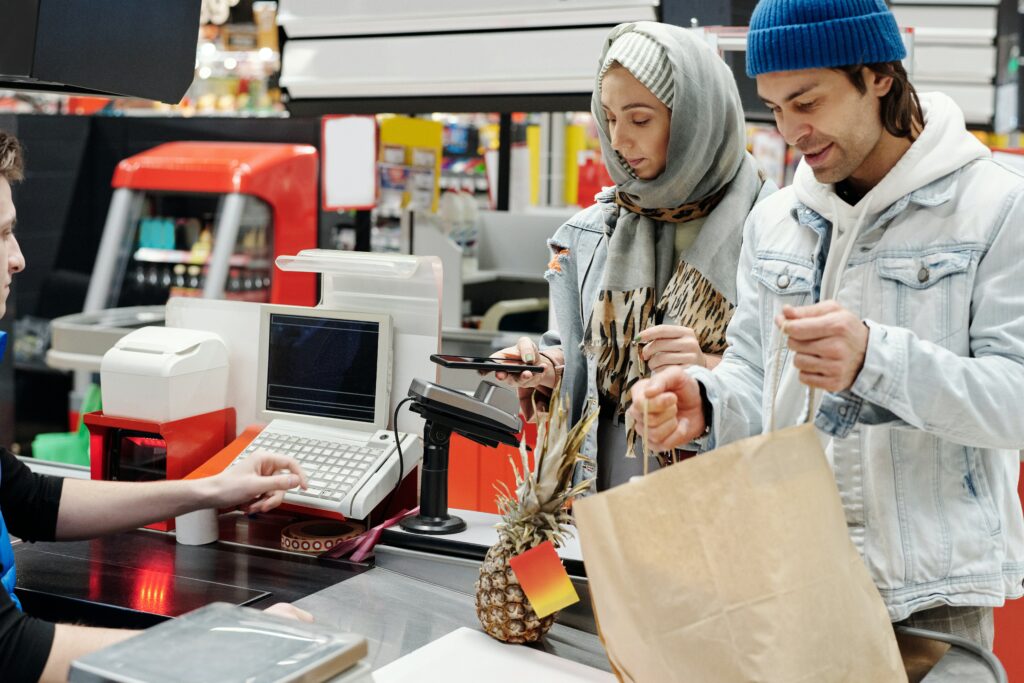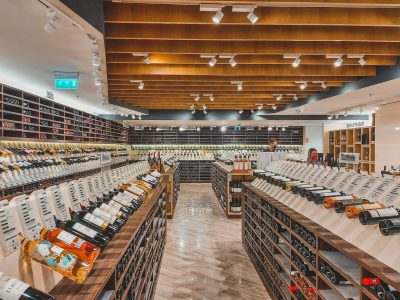Retail Media has become essential in the current advertising environment. Retail Media Networks allow brands and retailers to connect with their customers through the power of data and personalization, customizing their message and impacting customers when they are in the mindset of shopping. There isn’t a better time to promote a brand than when the customer is on a retail site, ready to buy a product. But the power of Retail Media goes further and beyond online networks. Brands and retailers can impact prospective customers when they are physically in the store by implementing and measuring performance of offline Campaigns.

In order to maximize the impact of Retail Media investment, it is important for brands and retailers to measure the performance of all their Retail Media campaigns, both online and offline. Retail Media Networks capture all the information collected on a shopper’s click path. Hence studying the shoppers’ behavior online and measuring online campaigns has become an easy task.
However, brands and retailers must not forget the potential of combining the different channels available in Retail Media, in particular the offline. In the Groceries industry, an important percentage of shoppers still prefer to shop in the store. This is why brands and retailers must not miss out on the opportunity of measuring the performance of offline campaigns in Retail Media in order to impact ready-to-buy shoppers and increase sales.
This article will focus on Offline Campaigns and the different performance indicators that can be used to measure their success.
Offline Campaigns definition
As the offline term indicates, offline campaigns utilize offline media channels to create product awareness.
An offline campaign is defined as any form of advertising implemented away from a brand’s owned online channels. Throughout the years, the list of offline channels has become longer as new technologies emerged in the market. We can now find a great variety of offline channels that brands and retailers can use to implement offline campaigns.
Below are a few examples:
- Traditional media: TV, Radio, Print
- Outdoor: Billboards, Transit
- Event Marketing: Sponsorship, Trade Shows, Conferences
- Publicity: PR, News
However, the best time for retailers and brands to promote their products is when prospective customers are in that “ready-to-buy” mode, and when it comes to offline, this will happen in the store.
The importance of offline campaigns
Is no doubt that the online channel has given retailers and brands the opportunity to capture so much information about customer behavior and real-time shopping journeys. Click paths have been crucial for segmenting audiences and targeting ads effectively. However, this should not lead to the conclusion that offline campaigns are no longer important.
In fact, many studies have shown that even if shoppers are informed and have done their research online, they still prefer to buy in the store. This is usually explained by the need for the shopper to touch and see the product before they buy.
For these reasons, a significant amount of purchasing decisions are still made in the store and not online. Therefore, offline campaigns are game changers for brands and retailers that want to reach all potential customers, not only those that are online.

There are two types of shoppers: digital shoppers and in-store shoppers. Both of them are equally relevant to any Retailer or Brand.
In-store shoppers go directly to the store to buy the product or service they are looking for. Creating ads to impact in-store shoppers is as important as creating ads for online shoppers in an online retail media network. The best place to advertise a product to an in-store shopper is with In-store TVs, Shelf-talkers, Endcaps, or any other form of in-store advertisement.
Types of offline campaigns
There are different types of offline campaigns in Retail Media Networks.
- In-store Displays or Point of Purchase (POP Displays)
- In-store Events: Sampling, demonstrations, etc.
This article will focus on POP Displays / In-Store Displays. In-store displays can be printed or digital.

Printed in-store Displays
In-store displays refer to those ads placed near the product that is being advertised. Include signage, standalone displays, aisle fixtures, and banners.
A Point of Purchase or POP campaign is a type of campaign that intends to stimulate impulse buying and increase sales of a product at the point of purchase.
Displays are designed to catch the eye of shoppers and convince them to purchase the product. In-store displays feature offers in the shopping journey and can be free-standing or fixed installations in the middle of the aisles, throughout the store, at the entrance/exit of the store, in the shopping tools, etc.

Here are some examples of retail displays forms that can be used in an offline campaign:
Free-standing displays:
- Floor Standing Display Unit
- Isle Unit
- Display cases or cabinets
- Gondola Display Unit
- Information POP Display
- Glorifiers (designed by brands to offer a highly visual experience)
- Countertop Display Unit
- Store Window Display
- Shop in Shop (larger shops)
Store Entrance/ Exit Displays
- Banners located at the store’s entrance/exit
Shopping tool Displays
- Displays in the Shopping Cart
Fixed installations:
- Shelving Units
- Endcap Units
- Checkout Displays
- Shelf Display Units
- Shelf stoppers
- Sidecap Display Units
Digital Signage / Digital POP Displays
Digital Signage includes all forms of digital signs, screens, and recordings displaying ads in a retail store. Ads can be shown in dynamic banners, videos, and recordings / audio clips.
- In-store TVs / Digital Signage: This form of advertising effectively shows a mix of product announcements and promotions.
- Audio ads / In-store audio clips: Audio clips are growing fast as a form of advertising and brands are immersing them in their offline campaigns.
How to measure the performance of offline campaigns
After listing the numerous options and places to display in-store ads, it’s time to talk about measurement. How do marketers measure the performance of offline campaigns in Retail Media? How do they calculate their ROI and measure the campaign’s effectiveness?

Measurement is a top priority for any marketing campaign, and for offline campaigns, it is no less. It is nowadays crucial for brands and retailers to measure the effectiveness of their offline campaigns. However, this can be a complex process since it is difficult to quantify results. Moreover, many brands perform offline campaigns without knowing how their in-store displays and digital signage are impacting ready-to-buy shoppers.
Off-line Campaigns KPIs
Very often, brands can only use the following KPIs to measure the performance of offline campaigns.
- Traffic: In-store traffic can be monitored by counting the number of shoppers that come to the store during the campaign.
- Sales: The product sales can be tracked by measuring the number of products sold during the offline campaign. Sales data from the POS can be used for measuring the performance of an offline campaign. If a sales lift in the sales of the advertised product is detected, the offline campaign is perceived as effective.

Additionally, an increase in brand awareness is considered a KPI to measure the impact of an off-line campaign, however, it does not provide the brand with accurate information:
- Brand awareness can be measured through surveys that track unaided and aided brand awareness before and after an offline campaign.
These KPIs for measuring the performance of offline campaigns in Retail Media are not entirely accurate. The sales generated in a campaign might not necessarily be attributed to the campaign itself; the sales can also be attributed to the pricing of the product, among others.

Furthermore, information on in-store traffic and product sales is not always available for brands. Measuring the performance of offline campaigns in Retail Media is one of the biggest challenges brands are facing when implementing Marketing offline strategies.
Innovative technologies to measure offline campaigns
Brands pay retailers to advertise products offline, however, referring to performance, retailers cannot give any information back. Unfortunately, they do not have as many details as they can obtain on their Retail Media Networks online.
For example, a retailer offers a brand the option to bid for an ad that can be displayed on all the retailer’s in-store screens, in a specific geographic area. But what information/results does the brand get in return to justify the investment made offline? How can the brand calculate the campaign’s ROI?
Shoppermotion has developed a technology to obtain shoppers’ paths in the store and can therefore measure the performance of offline campaigns, allowing retailers to improve their advertising offers, and on the other hand, allowing brands to get accurate results as they get from their ads online. Things are about to change for retailers willing to move a step ahead of the market.
When it comes to obtaining results, Shoppermotion can help retailers and brands to get the following information:
- Shoppers’ full path: This innovative technology can analyze a shopper’s path in-store from the entrance to the till.
- Conversion per shopper: Matching paths and basket items (shopping tickets)
- Shopper insights and profiles: Customer behavior insights and complete shopper profiles with in-store decisions.
Measure the performance of in-store POP and Digital Signage
In addition to analyzing the campaign’s performance, Shoppermotion’s technology allows the retailer to analyze the performance of each POP Display. For instance, retailers could analyze the performance of every in-store screen in their premises and determine the below details among others:
- Number of impacts
- Number of shoppers that stopped by the screen
- Number of shoppers that went to the advertised product’s category
- Number of shoppers that purchased the advertised product
- Traffic by shopping tool, demographics or moment of the week
Taking everything into account, Shoppermotion allows the retailer to go a step further than simply measure the offline campaigns performance: analyzing in depth each in-store screen or POP performance, to offer brands a much more effective ads display.
Depending on the article that needs to be advertised and based on the in-store screen performance, the retailer can offer the brand to display the ad more often on certain screens while segmenting the audience, rather than advertising the article on all in-store screens.
Conclusion
Retail Media platforms can improve their customer experience because they can gather all users’ data and shopping journeys. However, using Retail Media Networks to create digital ads only relevant to online shoppers is no longer enough. Brands need to reach shoppers that are in the store, and for that, they need to implement offline campaigns.
Despite the importance of impacting shoppers offline in the store, online advertising is currently the most common form of displaying ads for ready-to-buy shoppers in Retail Media.
Customizing an ad inside the store, for a specific in-store shopper, when the click path or the Shopping Journey’s data is not available in Real-time has become a challenge. To address this lack of information that causes offline campaigns to remain unmonitored, Shoppermotion has developed a technology that allows retailers to measure the behavior of shoppers offline in order to combine it with the knowledge of online behavior. This information will help both brands and retailers to better understand how customers interact with different channels. Obtaining customer paths in-store allow retailers to measure the performance of offline campaigns in retail media, learn how these campaigns influence shoppers’ behavior, and lastly, analyze the performance of each POP.






